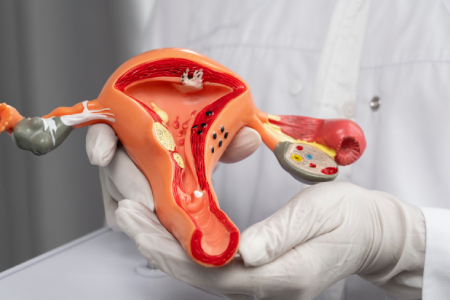Cervical Laminectomy
Relieving Spinal Cord Compression for Improved Mobility and Pain Relief
A cervical laminectomy is a surgical procedure designed to relieve pressure on the spinal cord and nerves in the neck (cervical spine). At the Brain and Spine Center of Texas, our expert neurosurgeons use advanced techniques to remove the lamina, a portion of the vertebrae, creating more space within the spinal canal to alleviate compression caused by conditions such as spinal stenosis, herniated discs, or bone spurs.
What Is a Cervical Laminectomy?
A cervical laminectomy is performed to decompress the spinal cord and nerve roots, often caused by:
- Cervical spinal stenosis – Narrowing of the spinal canal due to arthritis or age-related changes.
- Herniated or bulging discs – Disc material pressing against the spinal cord or nerves.
- Bone spurs (osteophytes) – Overgrowth of bone contributing to nerve compression.
- Cervical myelopathy – Dysfunction of the spinal cord due to prolonged compression.
- Trauma or degenerative disc disease – Injury or wear-and-tear affecting spinal stability.
If left untreated, spinal cord compression in the cervical region can lead to chronic pain, weakness, numbness, balance issues, and even loss of fine motor function. A cervical laminectomy is performed to prevent further neurological decline and improve quality of life.
The Cervical Laminectomy Procedure: What to Expect
The procedure is performed under general anesthesia and typically follows these steps:
- Incision & Exposure – A small incision is made in the back of the neck to access the affected vertebrae.
- Lamina Removal – The lamina (bony arch of the vertebrae) is carefully removed to create space for the spinal cord and nerve roots.
- Decompression & Nerve Relief – Any herniated disc material, bone spurs, or thickened ligaments pressing on nerves are removed.
- Spinal Stability Check – If necessary, a spinal fusion may be performed to enhance stability, particularly if multiple vertebrae are involved.
- Closure & Recovery – The muscles and soft tissues are repositioned, and the incision is closed with sutures.
The surgery usually lasts between 1 to 3 hours, depending on the complexity of the spinal compression.
Recovery & Post-Surgical Care
Following surgery, patients are monitored in the recovery unit and may require an overnight hospital stay. The typical recovery process includes:
- Pain Management – Medications are prescribed to manage post-surgical discomfort.
- Physical Therapy – Gradual exercises help restore neck mobility and strength.
- Activity Restrictions – Patients may need to avoid heavy lifting, excessive neck movement, or strenuous activities for several weeks.
- Follow-Up Appointments – Regular check-ups ensure proper healing and recovery progress.
Most patients experience significant relief from symptoms within a few weeks, though full recovery can take several months depending on the severity of nerve compression and overall health.
Why Choose the Brain and Spine Center of Texas?
- Expert Spine Surgeons – Specialists in advanced spinal decompression techniques.
- Minimally Invasive Options – When possible, we use smaller incisions for faster recovery.
- Comprehensive Care – From diagnosis and surgery to rehabilitation and long-term support.
- Personalized Treatment Plans – Focused on achieving the best possible patient outcomes.
Schedule a consultation
If you are experiencing chronic neck pain, numbness, weakness, or difficulty with coordination, our team at the Brain and Spine Center of Texas is here to help.

